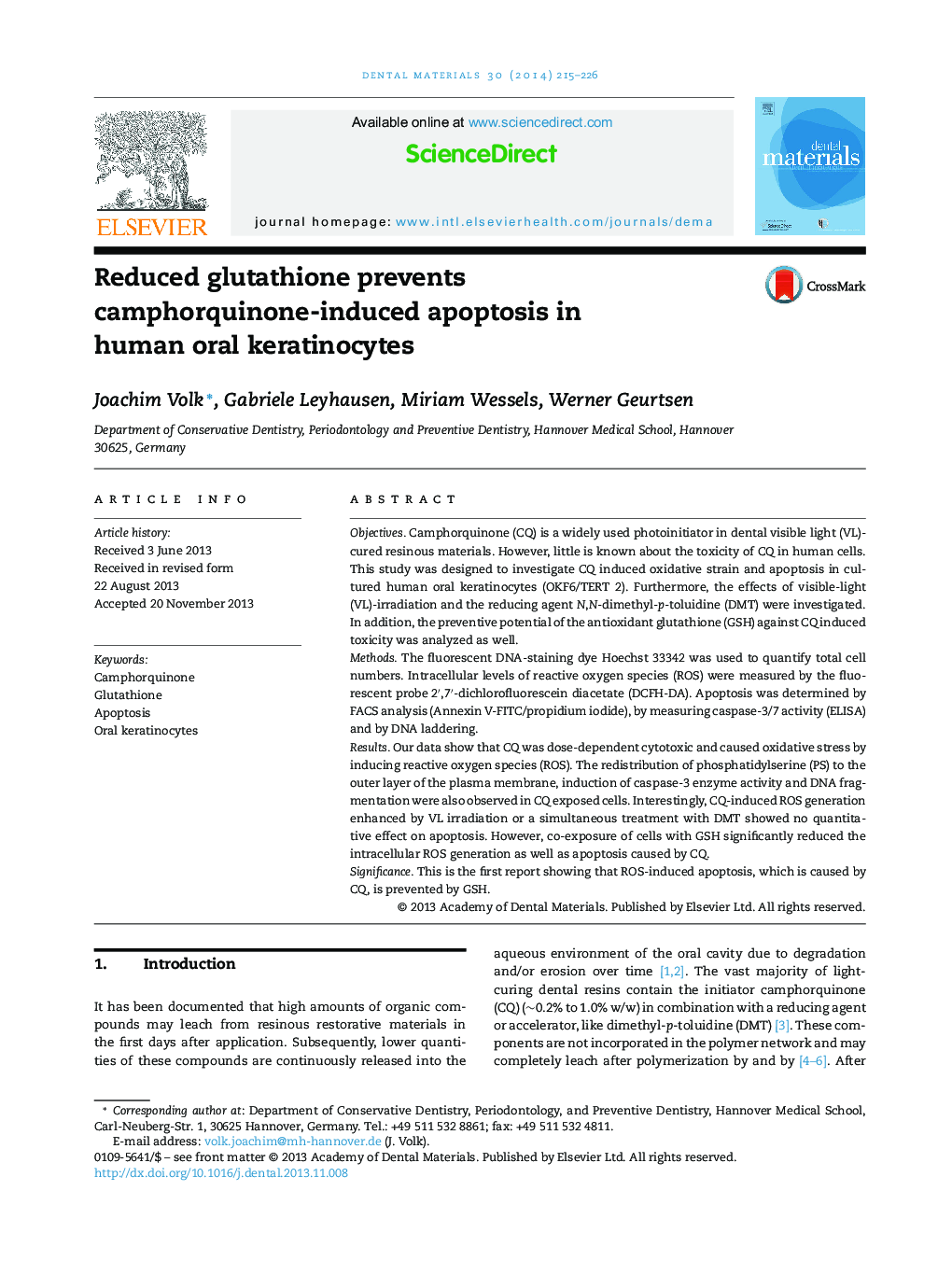| Article ID | Journal | Published Year | Pages | File Type |
|---|---|---|---|---|
| 1420905 | Dental Materials | 2014 | 12 Pages |
ObjectivesCamphorquinone (CQ) is a widely used photoinitiator in dental visible light (VL)-cured resinous materials. However, little is known about the toxicity of CQ in human cells. This study was designed to investigate CQ induced oxidative strain and apoptosis in cultured human oral keratinocytes (OKF6/TERT 2). Furthermore, the effects of visible-light (VL)-irradiation and the reducing agent N,N-dimethyl-p-toluidine (DMT) were investigated. In addition, the preventive potential of the antioxidant glutathione (GSH) against CQ induced toxicity was analyzed as well.MethodsThe fluorescent DNA-staining dye Hoechst 33342 was used to quantify total cell numbers. Intracellular levels of reactive oxygen species (ROS) were measured by the fluorescent probe 2′,7′-dichlorofluorescein diacetate (DCFH-DA). Apoptosis was determined by FACS analysis (Annexin V-FITC/propidium iodide), by measuring caspase-3/7 activity (ELISA) and by DNA laddering.ResultsOur data show that CQ was dose-dependent cytotoxic and caused oxidative stress by inducing reactive oxygen species (ROS). The redistribution of phosphatidylserine (PS) to the outer layer of the plasma membrane, induction of caspase-3 enzyme activity and DNA fragmentation were also observed in CQ exposed cells. Interestingly, CQ-induced ROS generation enhanced by VL irradiation or a simultaneous treatment with DMT showed no quantitative effect on apoptosis. However, co-exposure of cells with GSH significantly reduced the intracellular ROS generation as well as apoptosis caused by CQ.SignificanceThis is the first report showing that ROS-induced apoptosis, which is caused by CQ, is prevented by GSH.
